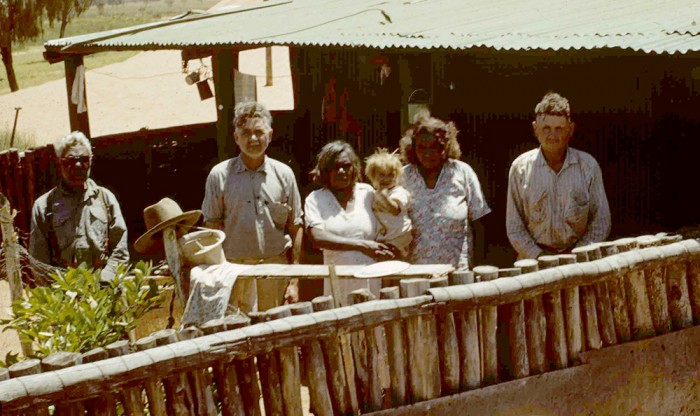
Traditional owners of Henbury Station, south of Alice Springs, will celebrate the recognition of their native title rights on a pastoral property that they have long wanted to buy.
Justice John Reeves will hand down a non-exclusive native title consent determination over an area of more than 5000 square kilometres to six land holding groups during a Federal Court sitting at Three Mile waterhole on Henbury tomorrow at 11am.
“We been fighting for a long time for the station,” said native title holder and former Central Land Council chair, Bruce Breaden. “I’ve been pushing really hard all the time to get country back, not only for my family but for all Aboriginal people.”
“The determination recognises the rights of the native title holders to hunt and gather on the land and waters and to conduct cultural activities and ceremonies,” said Francine McCarthy, the CLC’s manager of native title.
“It gives them the right to negotiate exploration and mining agreements, but unlike on Aboriginal land, they have no veto right.”
Mr Breaden said the process of applying for native title has still been worthwhile.
“We know native title is not strong like land rights, but it gives us a chance to have a say. We have sacred sites all over Henbury. Native title research was a chance to look around country and show the younger ones.
The native title holders belong to the Inteyere [IN-dia-ra], Twenge [TU-nga], Ipmengkere [IB-ma-nga-ra], Murtikutjara [MU-ti-kut-ja-ra], Aniltika [AN-il-ti-ka] and Nthyareye [‘DA-rie] groups.
Some of the old people still speak Pertame [PUR-dum], an endangered language they are working to revive, while some speak Western Arrernte [A-ran-da] and Matuntara Luritja [MA-toon-da-ra LOU-ri-tja].
Their elders and ancestors were born, lived and worked on Henbury Station since the late 1800s and many are buried there.
They have fought unsuccessfully for more than 40 years for the return of their country.
Following an Australian Government assisted purchase in 2011 the lease transferred to the RM Williams Agricultural Holdings for the purpose of carbon farming.
The CLC helped the traditional owners to negotiate with the company for a staged return of the land and to source funding for a dedicated Aboriginal ranger group to manage the land.
However, when RM Williams was placed in receivership in June 2013 the traditional owners, in collaboration with the Indigenous Land Corporation, submitted expressions of interest to purchase the property.
Their plans were dealt a bitter blow when Henbury was sold to Ashley and Neville Anderson, Ted and Sheri Fogarty and David Rohan, a consortium of established Central Australian pastoral interests.
“The Indigenous Land and Sea Corporation (ILSC) was helping but we didn’t have enough money. We will push it again next time. Working on country is good for Aboriginal people,” said Mr Breaden.
The CLC lodged the native title application in 2016.
Henbury, which will continue to operate as a cattle station, is home to the world’s oldest river, the Finke (Lhere Pirnte, pronounced LA-ra PIN-ta) and meteorite craters (Tatyeye Kepmwere, pronounced TAT-ja KA-pa-ra).
The determination area surrounds several outstations on Aboriginal land that are connected by an old stock route.
The Twenge [TU-nga] Aboriginal Corporation will hold the native title rights and interests for the determination area.
